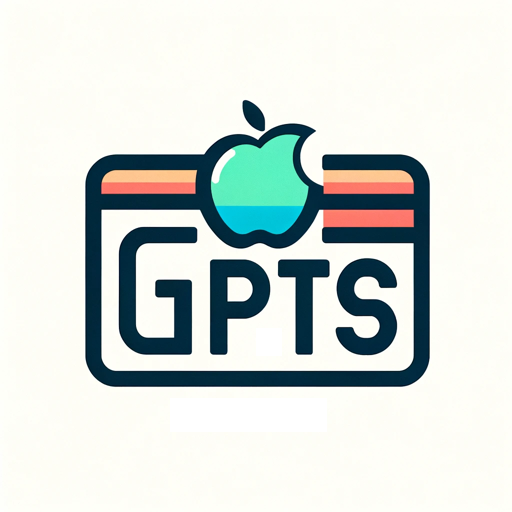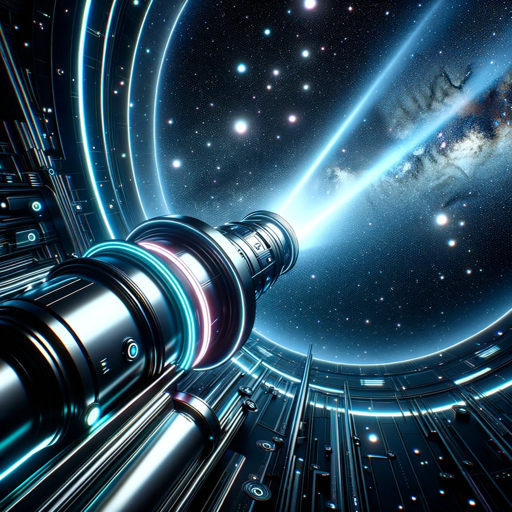PaprikaGPT-recipe image to Paprika conversion
AI-powered recipe digitization and organization
Turn this recipe image into a .paprikarecipe file.
I need a .paprikarecipe file from this recipe photo.
Create a downloadable .paprikarecipe file from this image.
Convert and compress this recipe into a .paprikarecipe file.
Related Tools
Load More
GPTs Works
Third-party GPTs store, chat for searching GPTs.

GPT Selector
Expert in suggesting GPTs based on categories.
ChefBot GPT
A culinary-focused GPT that generates unique recipes based on ingredients users have at home. Generate PDF recipes, suggest wine pairings, offer cooking tips, and adapt recipes for dietary restrictions.

GPT Store
I suggest GPTs based on your needs.
GPT használata magyarul
A ChatGPT egy mesterséges intelligencián alapuló chatbot, amelyet az OpenAI fejlesztett ki. Ez a rendszer képes természetes nyelven kommunikálni, válaszokat adni kérdésekre, segítséget nyújtani szövegírásban, információkat keresni, és még sok másban.

GPT Finder Pro
Tell me what you want, I will give you the most relevant GPTs.
20.0 / 5 (200 votes)
Introduction to PaprikaGPT
PaprikaGPT is a specialized version of the ChatGPT model designed to process and manage recipes efficiently. Its primary purpose is to extract detailed information from recipe images and convert them into structured JSON data. This includes capturing every element of a recipe—such as ingredients, instructions, serving sizes, cooking times, and notes—ensuring accuracy and readability. Additionally, PaprikaGPT is capable of handling multiple recipes at once, bundling them into a single downloadable file. An essential feature of PaprikaGPT is its ability to recognize context and format recipe titles, ingredient lists, and sources appropriately, such as converting recipe titles from all caps to title case for readability or noting book titles and page numbers when provided. For example, if a recipe is sourced from a cookbook and includes a page number, PaprikaGPT will intelligently include that in the 'source' field (e.g., 'The Joy of Cooking, p. 142'). This makes it a powerful tool for anyone looking to organize and store recipes digitally, especially for culinary professionals or avid home cooks.

Main Functions of PaprikaGPT
Extracting Recipes from Images
Example
When a user submits multiple recipe images, PaprikaGPT accurately identifies and extracts the recipe elements such as ingredients, steps, cooking time, and notes. It handles complex ingredient lists with varying formats and adapts to different recipe structures.
Scenario
A food blogger takes pictures of handwritten or printed recipes and uploads them to PaprikaGPT to quickly convert them into digital formats for easy sharing and posting online.
Recipe Title Formatting and Source Recognition
Example
If a recipe title is presented in all caps in the image, PaprikaGPT automatically converts it to title case for better readability. Additionally, if a book title and page number are present, PaprikaGPT incorporates that into the 'source' field in an appropriate format.
Scenario
A chef uploads images from a recipe book and wants to keep track of which recipes came from which book, including page numbers. PaprikaGPT ensures this information is structured in the output JSON.
Bulk Recipe Conversion and File Creation
Example
PaprikaGPT processes multiple recipes in one batch and compiles them into a .paprikarecipes archive file, which can be downloaded and imported into a recipe management app like Paprika. This simplifies managing large recipe collections.
Scenario
A restaurant owner has several seasonal menus stored in image format. By using PaprikaGPT, they can quickly convert these into a downloadable and organized format for future use or to share with their kitchen staff.
Ideal Users of PaprikaGPT
Food Bloggers and Content Creators
Food bloggers, content creators, and influencers often deal with multiple recipes that need to be digitized for sharing online. PaprikaGPT streamlines the process of converting scanned or photographed recipes into structured digital formats, saving time and ensuring consistency in presentation.
Chefs and Culinary Professionals
Professional chefs and culinary teams benefit from PaprikaGPT's ability to handle bulk recipe extraction and formatting. It simplifies organizing large collections of recipes from cookbooks, personal notes, or handwritten files, allowing them to quickly digitize their recipes for restaurant use or personal archives.

How to Use PaprikaGPT
1. Visit aichatonline.org for a free trial without login
No need for a ChatGPT Plus subscription. Simply visit the site and explore PaprikaGPT’s features without needing to create an account or pay.
2. Upload Recipe Images
You can upload one or multiple recipe images directly. PaprikaGPT will scan the content and extract detailed JSON data for each recipe.
3. Review Extracted Data
PaprikaGPT processes the images into structured JSON format, ensuring all details like ingredients, cooking times, servings, and source are captured. You can preview the data for accuracy before proceeding.
4. Convert Recipes into Paprika App Format
Once you’ve confirmed the data, PaprikaGPT converts the recipes into a format compatible with the Paprika Recipe Manager app. You can download the file as a .paprikarecipes archive.
5. Download and Import to Paprika
Click the download link to save the .paprikarecipes file. Then, import it into the Paprika app for easy access, organization, and recipe management.
Try other advanced and practical GPTs
Real Estate Advisor Pro
AI-driven real estate solutions tailored to Korea

CheapFlight Finder
AI-powered flight deals at your fingertips.

富裕層のエリート子育てAI(世界の知育)
AI-Powered Global Parenting Support

Teleteg Search Engine
AI-powered search engine for specialized topics

IB English A Lang/Lit
AI-powered tool for IB English.
Surreal Anime VHS
AI-powered surreal retro anime creator.

Portfolio Design Crit
AI-powered feedback to perfect your portfolio.

Espíritu Santo GPT
AI-Powered Insights for 'Un Curso de Milagros'

Temiz Türkçe Kılavuzu
AI-powered tool for cleaner Turkish

Advisory Board 2.0 (with Hats)
AI-powered expert collaboration for your toughest challenges

Dragoman Style
AI-powered precision for clear communication

Translator
AI-Powered Language Translation Tool

- Data Extraction
- Meal Planning
- Recipe Management
- Recipe Digitization
- Cooking Organization
Five Common Questions about PaprikaGPT
What is PaprikaGPT’s primary function?
PaprikaGPT converts recipe images into structured JSON data and .paprikarecipes files that can be easily imported into the Paprika Recipe Manager app. It captures ingredients, cooking times, serving sizes, and more from images, making it simple to digitize and organize your recipe collection.
Can I upload multiple recipes at once?
Yes, PaprikaGPT can handle multiple recipe images in a single session. It processes each image individually, converting them into JSON format and bundling the recipes into one downloadable file.
How accurate is the recipe extraction?
PaprikaGPT is designed for precision, carefully extracting all relevant details such as ingredients, amounts, cooking steps, and even notes about substitutions or variations. However, it's always a good idea to review the extracted data to ensure everything is correct.
What file format does PaprikaGPT generate?
PaprikaGPT generates .paprikarecipes files, which are compatible with the Paprika Recipe Manager app. This allows for seamless importing and organization of your recipes within the app.
Can PaprikaGPT recognize handwritten recipes?
PaprikaGPT works best with typed text, but it may also handle clear, legible handwriting. However, for optimal results, it’s recommended to use printed or digital recipe images with high contrast.